Colonial troops of the Entente countries in the First World War
During the First World War, all the states parties to the conflict in one way or another used the potential of their colonies. Even Germany mobilized the population of their African possessions, as a result of 14 thousands of African soldiers gave their lives, for the sake of the interests of a distant metropolis. But to a much greater degree the human and raw materials of their colonies were used by Great Britain and France.
England from the beginning to the end of the war managed to mobilize up to 2,5 millions of soldiers from their colonies and dominions. On some fronts, colonial soldiers made up the bulk of the troops. Half of these military contingents accounted for the troops of British India. In this case, the Indian soldiers fought mainly on secondary theaters of war (Middle East, Africa, the Mesopotamian Front). But there were Indian troops on the Western Front. For example, the Bengal lancers became famous for their courage and cruelty to the enemy. At the same time, the troops of the English dominions: Australia, New Zealand, Canada and South Africa, as the most prepared, were used mainly on the Western Front, as well as on the Thessaloniki Front, and they also took direct part in the Gallipoli operation. On the battlefields of World War I, 200 killed thousands of soldiers from the colonial forces of the British Empire.
France during the First World War was able to mobilize up to 550-600 thousands of soldiers from their African colonies. Moroccan and Algerian divisions were particularly resilient in battle. At the same time in the ranks of the French armed forces killed more than 100 thousands of mobilized "natives." Were in the French army and national formations, for example, the Polish Legion and the Italian battalion, commanded by Giuseppe Garibaldi, also Giuseppe Garibaldi.
Along with mobilizing directly into the armed forces, the imperialist powers of the beginning of the 20th century actively used several million indigenous inhabitants of the colonies to carry out various works at the front and in the rear. For example, in Egypt, whose population at that time did not exceed 10 million people, about 1,5 million people were mobilized into the so-called Camel and Labor Corps.
The war demanded from the fighting states large amounts of food, equipment, metals, ammunition, the most diverse raw materials, most of which came from the colonies and dependent states. So India during the First World War was turned into a base for supplying the British army with food and equipment. The colonies of Great Britain in Asia and Africa also supplied with raw materials the most important branches of the national economy of the metropolis: non-ferrous and ferrous metallurgy, engineering, food and light industry.
Certain types of strategic raw materials for the country were imported into the warring France from the colonies, which were not produced at all in the metropolis or mined, but in very insignificant amounts. The North African colonies and New Caledonia supplied the republic with non-ferrous and ferrous metal ores, phosphorites, food, and the French Equatorial and West Africa and Indochina - with raw materials for light industry and food, Madagascar - with graphite and food. But the main resource that Great Britain and France could find in their colonies were additional soldiers.
British colonial troops
After the outbreak of World War I, the Indian command was able to send only 2 infantry and 2 cavalry divisions to the European theater of operations. Of these four formations, the Indian Expeditionary Corps A was formed, commanded by Major General James Willcox. Already 30 September 1914, the corps units arrived in France, landed in Marseille. Indian troops were sent to the front at Ypres. At the end of the same year, Indian troops participated in the battles of La Bassa. Indian Expeditionary Corps A was the only 7 Indian expeditionary corps formed during World War I, parts of which fought in Europe.
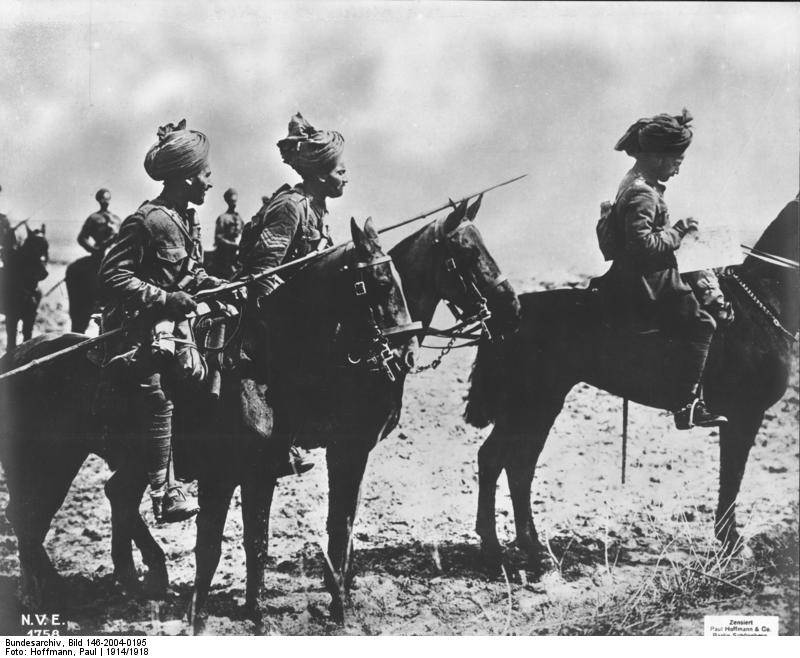
In March 1915, the Indian division took part in the offensive at Neu-Chapelle. The Indian troops, who had not had time to get used to the new Lee-Enfield rifles, did not have their own artillery, did not adapt well to the European continental climate, especially in the winters, were not full-fledged combat-ready units. In addition, there were not enough English officers in the Indian units who knew Hindi. The overall low morale of the Indians led to the fact that in the fall of 1915, both infantry divisions were transferred from France to Egypt. After the withdrawal of infantry units from Europe, only two Indian cavalry divisions continued to fight with German troops on the Western Front, mostly in reserve, awaiting a breakthrough in the positional front. At the same time, in 1916, these units took an active part in the Battle of the Somme. In March, 1918, they were also transferred to Egypt.
Indian divisions in Europe experienced difficulties in obtaining replenishment from their homeland, and also suffered from the unusual winter cold. However, after sending combat units to the Middle East, on the continent in 1917, at least 50 thousands of members of the so-called Indian workers' corps arrived who were engaged in a variety of economic and military engineering works in the immediate rear of the warring units.
Of the 130 thousands of Indians, who during the First World War were on the Western Front in France and Belgium, about 9 thousand people died. Since Indian troops suffered heavy casualties, only in April and May 1915, the Lahore Division lost in combat operations 3888 people from 15 980 personnel, almost a quarter, in the territory of Britain and France several hospitals were opened specifically for them. So many Indian soldiers, the overwhelming majority of whom had never before traveled farther than their village or the neighboring town, fell into the metropolis and managed to make their own impression of it.
Historian David Omissi, who analyzed a large number of letters from Indian soldiers from the Western Front, sent to relatives and friends in India, concluded that at that time no special anti-British sentiments were observed among Indian soldiers. Soldiers who could not read and write (they simply dictated letters to a few literate people in the units) were often not familiar with the anti-British sentiments, literary and political demands of the Indian National Congress, so the correspondence did not speak sharply about the metropolis or the British. On the contrary, the living conditions of Europe, and especially Great Britain, were popular with Indians. Special enthusiasm caused by ordinary Indians hospital. Medicines, food, modern hygiene items, as well as “the finest electric lamps” made an indelible impression on the wounded.
But still, most of the time Indians spent not in British hospitals, but in France, the letters from which were no longer rosy. Many soldiers were stunned by the losses, as well as by the strength and tenacity of the resistance of the enemy. The German army was strikingly different from all opponents that Indian forces had previously encountered in Africa and Asia. Some of them even wrote home to warn their relatives and relatives against the possibility of enrolling in volunteers.
The experience that Indian soldiers gained on the Western Front was ambivalent. On the one hand, for the first time hundreds of thousands of Indians were able to see the European metropolis with their own eyes, as well as the countries adjacent to it. The incredibly high standard of living of Europeans impressed both well-educated Indians who had never been to Europe before, as well as illiterate peasants from remote places in Nepal, Uttar Pradesh or Punjab. Industry, agriculture, cities of Great Britain and France caused a keen desire among Indian soldiers to quickly move and introduce many of the European technologies in their homeland. The customs of Europeans, the simplicity in communicating with each other, their relations between the sexes, church rites, led many Indians to take a fresh look at their own traditions.
On the other hand, the Indian soldiers were shocked and truly amazed at the grandeur and cruelty of the modern war. Small clashes on the borders and wars with tribes that did not possess even a millionth of the weapons that the Germans had at their disposal were, in comparison with the trenches of the First World War, just an easy walk and a relatively safe adventure. Many of the Indians, who previously did not attach importance to the propaganda of the Indian National Congress, first began to think about the meaning of their participation in the wars waged by the British Empire. The First World War, which ultimately claimed the lives of the 70 order of thousands of Indian soldiers, stirred up the whole of Indian society, becoming a prologue to the future struggle for the country's independence from the British crown. After the war, relations between Britain and India changed. So in 1920, India became a member of the League of Nations; in the same year, Indian athletes took part in the Olympic Games in Antwerp. The authority of India after the war grew, as did national ambitions.
French colonial troops
If the troops of British India were present in the European theater of military operations in limited quantities, the indigenous peoples of the French colonial empire made a significant contribution to the victory of the Entente states in the First World War. Moroccan cavalrymen, Senegalese riflemen and many other representatives of the French colonies paid a heavy bloody tax. Between 1914 and 1918 for a year more than 100 thousands of them were killed, died from wounds and diseases, or were missing. Most of the soldiers of France put the Maghreb and French West Africa (some were volunteers, the rest were recruited by force).
How many “natives” were recruited in the colonies to help the “nation carrying civilization,” as the French themselves had positioned themselves? The largest military contingent was supplied by the Maghreb (Algeria, Morocco and Tunisia) - more than 200 thousand people. Black Africa has put another 189 thousand. At the same time, most of them fell on French West Africa, while Equatorial Africa sent about 20 thousands of people. Other colonial possessions of France also contributed to the overall victory of the metropolis. So Madagascar put 46 thousand soldiers, and Indochina - 50 thousand. Five Indian trading posts and the Pacific colonies of France supplied a battalion. In general, from 550 to 600, thousands of “natives” - the indigenous inhabitants of the colonies and protectorates of France were mobilized during the First World War.
This was about 4-5 times less than the UK could mobilize. However, the overwhelming number of British colonial troops fought in peripheral theaters of war. Of course, part of the soldiers mobilized in the French colonies also remained in place, taking part in the conquest of German possessions in Africa and Oceania, another part went to the peripheral front - Thessaloniki and the Dardanelles, but the overwhelming majority - 450 thousand people fought against German soldiers on the Western Front.
French possessions in North Africa were among the most developed and densely populated French colonies. In addition, they were located closest to the metropolis, which is why during the First World War, Algeria, Morocco and Tunisia became valuable sources of manpower for the French troops. After the outbreak of the war, the French army of Africa, stationed in the Maghreb countries and recruited from local residents, as well as the forces of the Foreign Legion and part of the ground forces from France began to move. In September, 1914, the 25 of thousands of Algerian shooters, had already fought in northeastern France. They were the first 170 of thousands of Arabs and Berbers of Algeria who took part in the First World War. 33 thousands of them were already in the army at the beginning of the conflict, another 80 thousand people were drafted into the armed forces during the war (conscription was extended to the local population in Algeria as early as 1913 and managed to provoke a series of riots) and 57 thousand voluntarily went to the front. A little more than 62 thousand people got to the front from Tunisia, about 37 thousand more were sent to the Western front and the Middle East from Morocco.
It is worth noting that many soldiers who arrived from North Africa were thrown into battle immediately. For example, the Moroccan brigade in the 5 battalion was in the thick of the battle of Marne in September 1914. In January, 1915, her remnants were consolidated into the 1 th marching regiment of Moroccan archers. Such a high loss of manpower demanded from France an increase in the African army due to the formation of new units of riflemen and zouav. The cavalry spagahs that operated in the Middle East did not stay aside. The continuing need for manpower forced the French to recruit more and more soldiers from Africa, from the depths of the continent, despite the fact that they were significantly inferior to the Europeans and the Maghreb in education and discipline, and also endured the climate of the Western Front much worse, especially in the winter .
By 1917, at the front, in numerous training camps, and also in rear work, the 80 battalions of the “Senegalese” worked, as they all were conventionally designated. Many of them fought well at the front, but worked harder to ensure communications for the rear. By the 1918, the 40 battalions of the Senegalese were in France itself, the 14 in Algeria and Tunisia, the 13 in Morocco and the 27 in the east, on the Front of Thessaloniki and the Levant. From 1914 to 1918, about 189 thousands of black soldiers were recruited in the French African colonies, 134 thousands of them were in Europe and North Africa, 29 thousands of Africans were killed and missing, 36 thousands more were injured, many were disabled .
Despite the existing problems of adaptation to unusual European conditions, the French colonial soldiers proved themselves quite brave wars that were merciless to the enemy, which even caused the Germans to discredit them with racist propaganda. Approximately one in five of the "Natives" mobilized by France did not return from the battlefields of the Great War. They took direct part in the most brutal campaign battles on the Western Front.
In the very first weeks of the war, the German armies were able to rapidly advance on the Western Front, with the intention to bypass the capital of France from the west, take the French army into ticks and force it to capitulate, taking France out of the war at the very beginning. However, the calculations of the German command did not come true, at least not at this time. Large losses in manpower and lack of necessary reserves forced them to revise their strategic plans. Very fierce fighting took place on the Urk River, which is a tributary of the Marne. Here the units of the 6 of the French army and two corps of the German army collided. 7 September 1914 at the critical moment of the battle of the Marne, at the moment when the commander of the Paris defense, General Gallieni requisitioned city taxis to transfer soldiers to the front lines, a Moroccan brigade entered the battle. Of the 5 thousands of Moroccans, by the end of the battle, there were about 700 people in the ranks. The command of the French army, which at first did not trust the Moroccan riflemen, who had arrived at the front from the territory that was difficult to “pacify”, received confirmation of their loyalty. The fighting on the Urk River, as well as the battles at the Saint Gondi swamps, were crucial to the victory of the French army in the battle of Marne.
Subsequently, the colonial battalions were directly involved in all the major offensive operations of the First World War on the Western Front, including the bloody battle of Verdun (February 21 - December 18 1916 of the year). Having failed to achieve decisive success on the Eastern Front during the 1915 year, the German command again shifted its emphasis to the west, relying on the breakthrough of the defense of the Allied forces in the area of the fortress of Verdun, hoping in this way to withdraw France from the war. Fort Duomon, which was captured by German 25 soldiers in February, found itself in the center of numerous battles that lasted until October 1916, when the Moroccan colonial infantry regiment with the support of Somali and Senegalese shooters beat it back, nullifying all 9 month campaign results for the German side . Four soldiers of the colonial troops under the command of sapper Dumont were the first to penetrate the fort, capturing the 4's German officers and the 24 German soldiers. As noted later in the order for the army, the Moroccans were then able to hold the fort, despite the repeated German counter-attacks.
At the same time, the "native" soldiers of the French army actively showed themselves on another part of the Western Front - in the operation of the Franco-British troops on the Somme River, which began on July 1, at the very height of the Werden battles. 9 July a small detachment of "natives", commanded by Sergeant M. Dyarra, went on the attack on the trenches of the German troops. Having managed to advance quite close to the Germans' positions, the detachment managed to hold out for more than 36 hours under the constant enemy rifle and machine-gun fire. After repulsing all the counterattacks of the Germans and forcing them to surrender, the "natives" captured 130 people, including 7 officers, as well as 5 machine guns. They were noted in the order for the army, and their commander posthumously. The attack on the Somme, which ended on November 18 on 1916, allowed the German troops to push through the depths of 10 kilometers, and the strategic initiative shifted from the Central Powers to the Entente.
The most impressive successes of the French North African units were during the 1917 and 1918 campaigns on the Thessaloniki front, as well as in the Middle East. Moroccan infantry and cavalry units were able to distinguish themselves during the capture of Skopje, and the spagged squads, together with the Algerian arrows, helped the British forces of General Allenby to capture Lebanon and Syria, triumphantly enter Damascus.
Losses among the French colonial troops during the First World War, according to the most conservative estimates, amounted to more than 70 thousand people dead, more real is the figure of more than 100 thousand people killed. In other words, every fifth of the “natives” mobilized for the war died on the battlefields. Having taken an active part in the battles, many natives of the colonies thereby declared themselves publicly heard. And although out of the total number of people mobilized in France during the war 8 410 000, the total number of natives of the colonies was of the order of 15%, the fact of their participation in the war and recruitment into the French army was significant. As if they were told: you are French, like everyone else.
However, if that could be said, it was only during the war years. The deceived hopes of the “natives” for equal rights and opportunities with the natives of the metropolis led to a rise in national self-awareness. And this, in turn, launched the process of decolonization, the main stage of which occurred in the first two decades already after World War II.
Information sources:
http://pochta-polevaya.ru/aboutarmy/history/zabytyye-stranitsy-velikoy-voynyy/47671.html
http://elibrary.ru/item.asp?id=23652082
http://warspot.ru/5945-zapadnyy-ray-obernuvshiysya-adom
http://warspot.ru/6538-pravo-umeret-za-evropeyskuyu-rodinu
http://rusplt.ru/world/world_5701.html
Open source materials
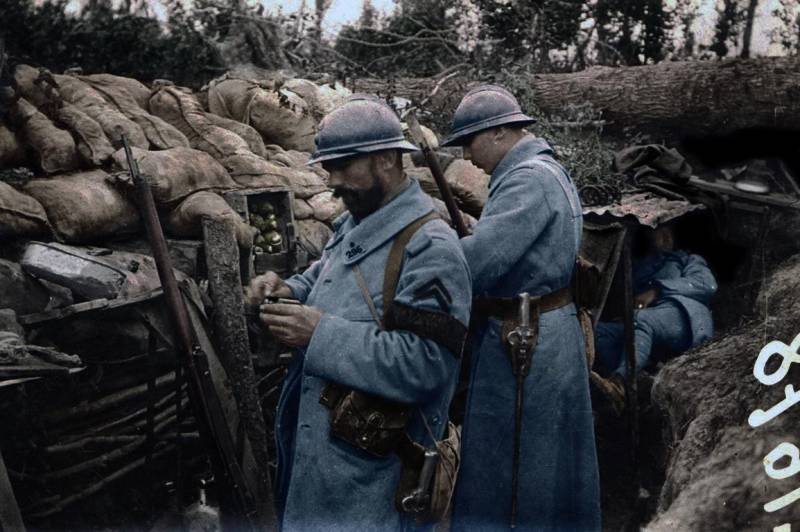
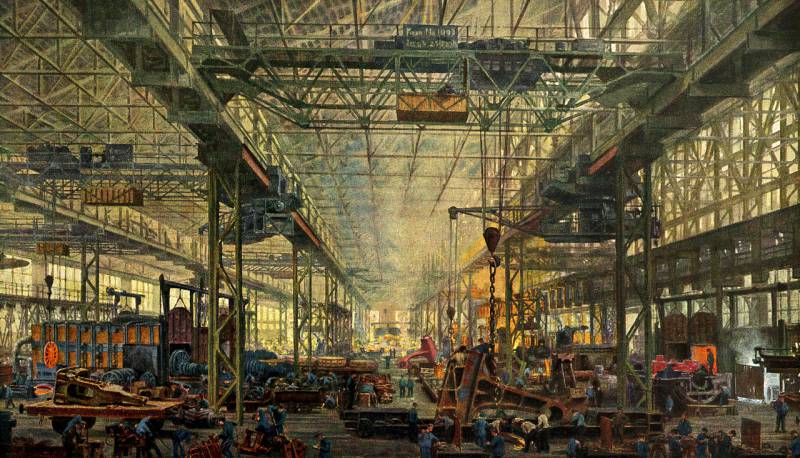
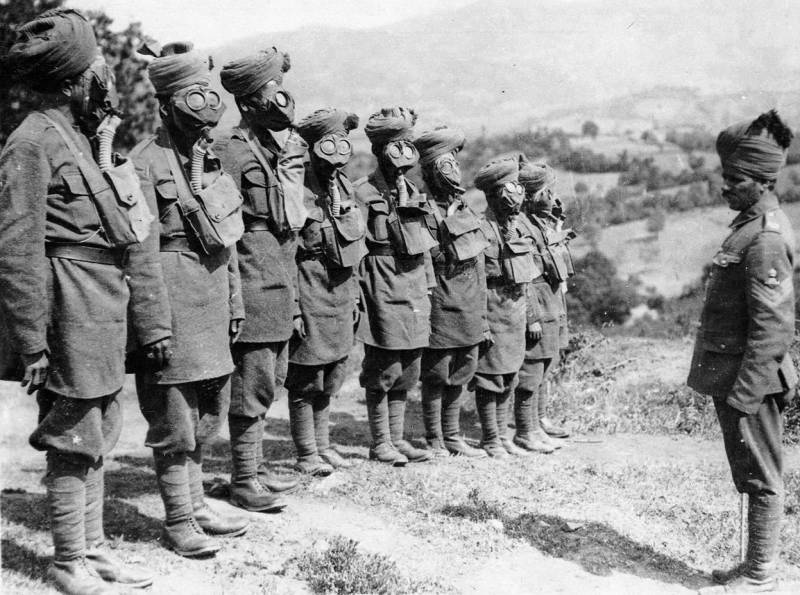
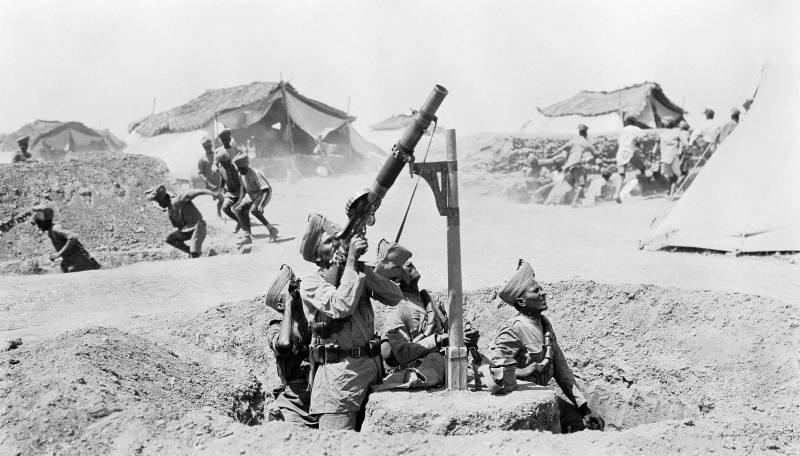
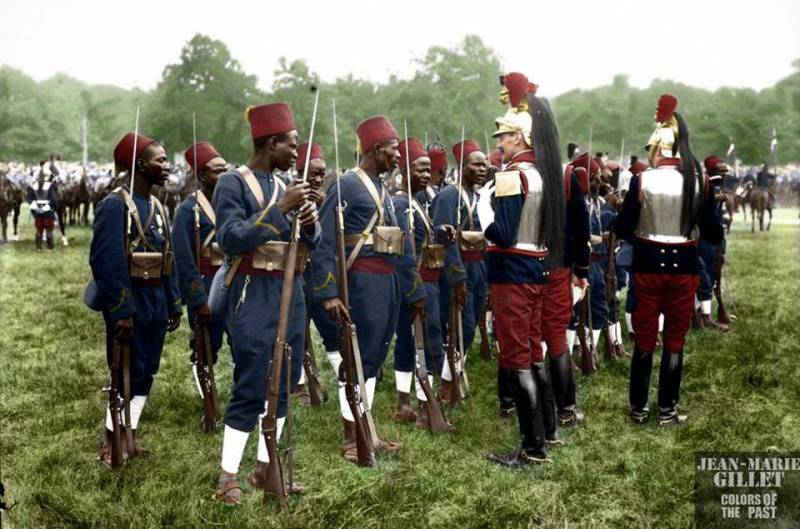
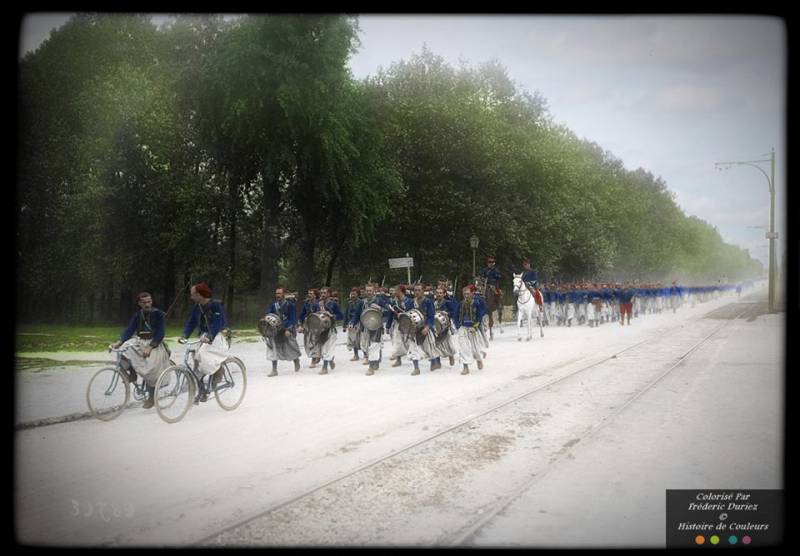
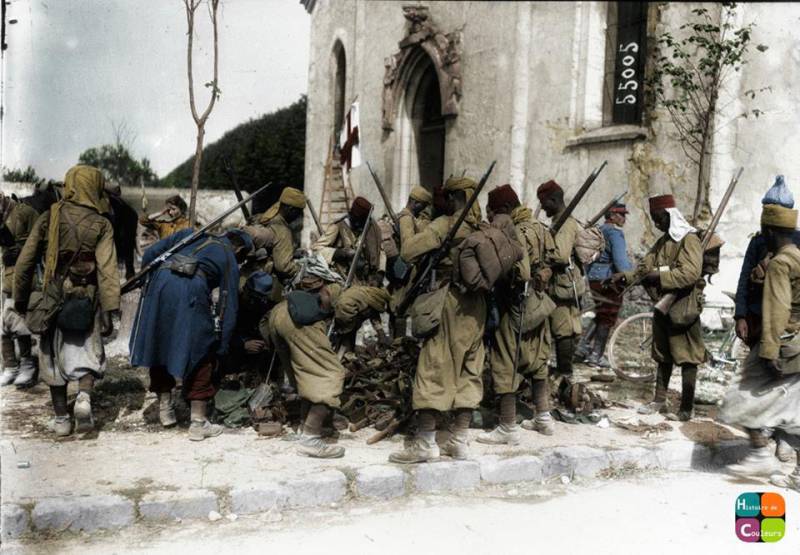
Information